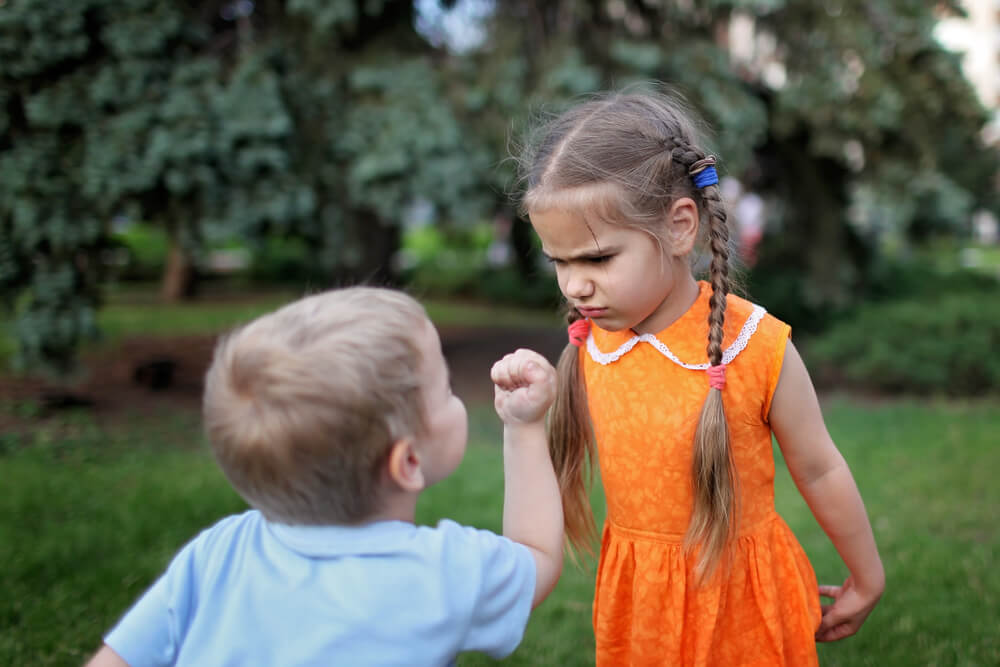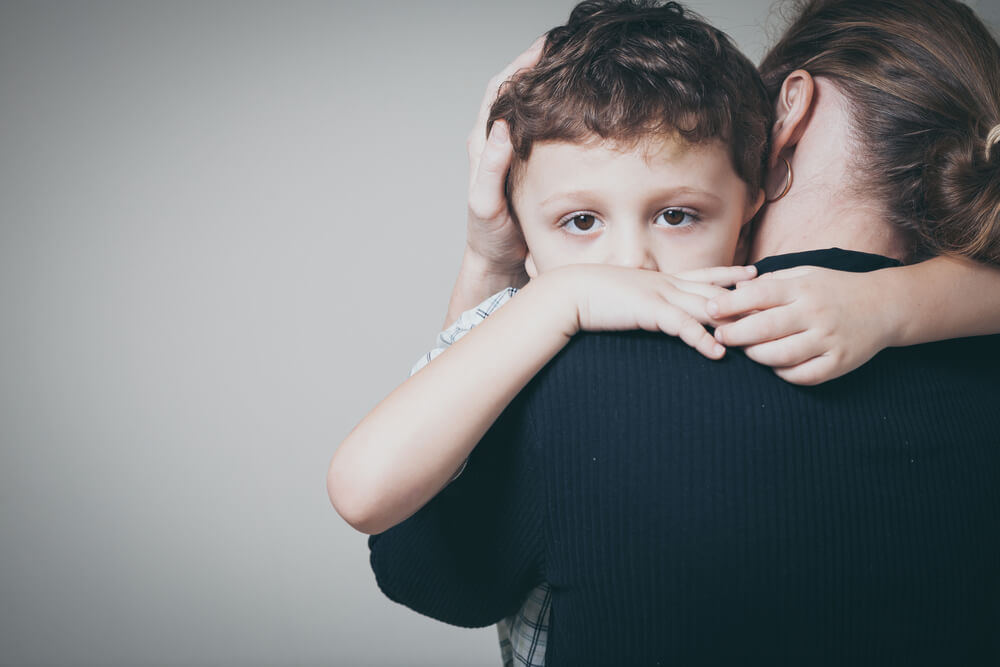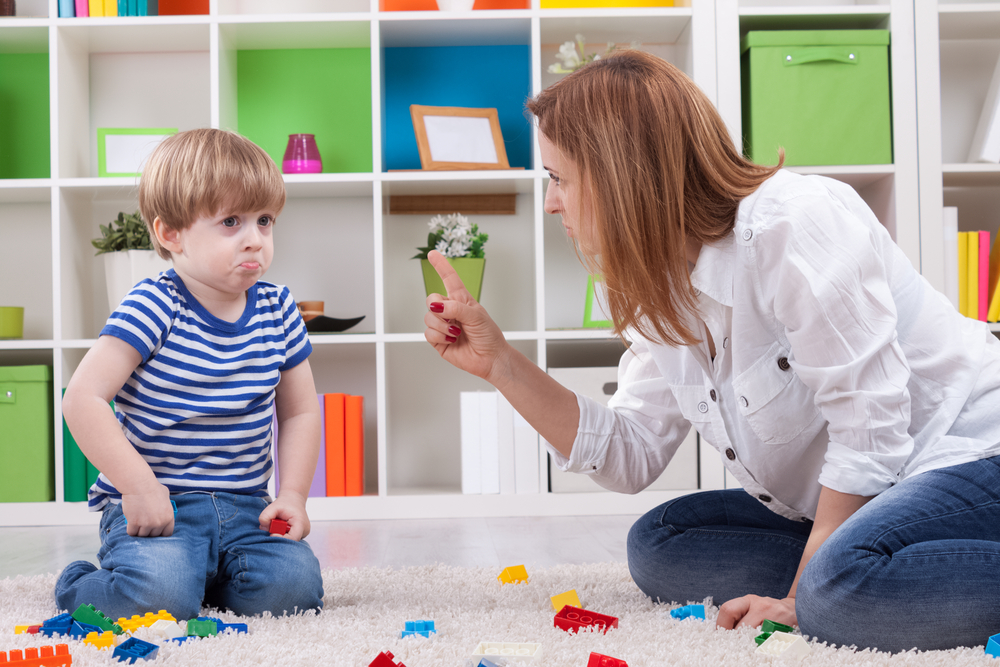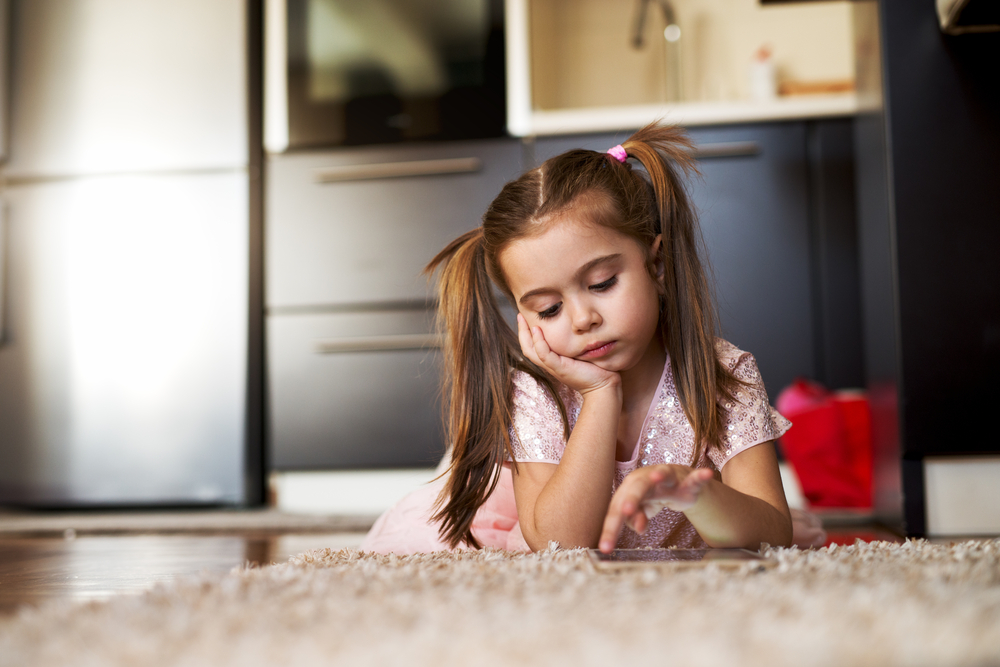Ways To Discipline Your Child or Why Punishment Doesn’t Work

People often use the terms “punishment” and “discipline” interchangeably. However, there is a difference between the two. It’s important for parents, guardians, and adults, in general, to understand the difference to know how to teach and raise children correctly.
Contents:
- Difference Between Discipline and Punishment
- Punishment vs Discipline
- Effective Discipline Strategies
- Discipline Tips by Age/Stage
Difference Between Discipline and Punishment

Prostock-studio/Shutterstock.com
The main difference between discipline and punishment is this: discipline is about training and teaching people to behave in certain ways and make better choices, whereas punishment is purely about inflicting harm to someone–usually a child–in retaliation for them behaving badly or doing something that you didn’t like.
In order to better understand this difference and the key areas in which discipline and punishment are different, we need to completely know what each term means. So, let’s begin by looking at some definitions of punishment and discipline in order to understand the clear difference between them.
What Is Punishment?
We’ll begin with a look at punishment. What is punishment? Well, punishment is when someone inflicts harm or suffering onto another individual in response to their actions or behavior. For example, if a child does something bad, a parent might shout at them or make them go to their room.
The aim of punishment is clear: by giving a child a negative experience, we imagine that they’ll be unhappy and therefore stop whatever they were doing. This can work, to an extent, and children often stop what they were doing if they get yelled at or made to suffer in some way.
However, punishment is a very short-term and short-sighted way of dealing with problems. It doesn’t teach children about why their behavior was wrong, nor does it inform them on the right steps to take to change their behavior in the future. Not only that, but it can have many other negative effects, as well.
The Problems with Punishment

Prostock-studio/Shutterstock.com
There are a lot of potential problems that come along with punishment. Here are just some notable examples:
Confusion
Often, punishment can be a source of confusion for a child. They may not understand why they are being punished and could feel completely lost and bewildered by the whole situation. Even if you can clearly see how they are misbehaving, it might not be so obvious to them. This is why discipline is often preferred, as it helps to explain situations to children much more clearly.
A Bad Example
Not only can children feel confused about why they are being punished, but they might also become confused about the concept of punishment in general. If they are shouted at or even physically hit, without understanding why, they may start to think that it’s fine for them to emulate that behavior with others. This is one way in which children may become violent or turn into bullies.
Fear
The main way in which punishment works is through fear. The idea is to scare children into stopping a certain action or changing their behavior because they become fearful of the response. This can have serious negative effects, and kids can start becoming fearful of their parents and other caregivers in their lives.
Mental Disorders
Repeated punishments can even lead to mental disorders in children that may remain with them for their entire lives. By being repeatedly exposed to scary and confusing situations, children may suffer conditions like anxiety, depression, and post-traumatic stress disorder (PTSD) later on. This can affect their personal lives, relationships, careers, and more.
Short-Sighted
As stated earlier on, another big problem with punishment is the fact that it’s a short-sighted solution to a problem. Yes, it may have an immediate impact and can be a way to stop children from doing something bad. However, it won’t have the long-term educational effects of discipline, as the child in question will simply feel afraid and confused, rather than understand why they were punished.
Does it Work? When? What Are the Consequences?

Prostock-studio/Shutterstock.com
Many experts have debated the merits of punishment, and there are arguments on both sides. In general, we can say that punishment “works” to the extent of making a child stop doing something in the short term. However, in terms of long-term education and behavior importance, it does not really work and can have many negative effects.
In very serious situations, when a child might be putting themselves or someone else in danger, shouting or some other form of punishment can defuse the situation. However, without positive discipline and taking the time to explain to the child why they were punished and how their actions were wrong, they may simply feel confused, scared, anxious, and fail to learn anything.
In fact, the consequences can become even more negative than that. In some cases, children simply learn that they should try to avoid getting caught in the future. This can lead to them becoming more deceitful, lying, or hiding their actions from adults. This may also cause breakdowns in relationships between children and their parents or guardians.
What Is Discipline?
So, what exactly do we mean when we talk about discipline? Well, discipline is more of an educational and positive practice used in response to a child misbehaving or doing something that we don’t want them to do. It’s about teaching kids accountability for their actions.
The main aim of discipline is not simply to punish kids and make them stop what they were doing, but to explain to them why what they did was wrong. This way, they should feel less confused by the negative or unpleasant consequences of their actions.
Types Of Discipline

Prostock-studio/Shutterstock.com
It is generally agreed upon that there are five main methods of discipline. Parents and guardians can use all of these different types, depending on the situation.
1. Boundary Discipline
Boundary discipline, as the name implies, is about setting boundaries or rules for children to follow. If they then break those rules, they will face negative consequences. But by learning to obey the rules, they can become more well-adjusted people who understand authority and find it easier to grow into civilized society. Here’s an example:
A child might like to ride their bike around the neighborhood after school. The parent can set a rule that the child needs to be home at 6.30 pm for dinner. If they get back late, they won’t be allowed to ride their bike again for the rest of the week. This establishes a clear system and choice for the child: be on time and enjoy your bike rides, or break the rules and face the consequences.
2. Behavior Modification
With behavior modification, the idea is to encourage children to behave better by reinforcing and rewarding good behavior. Meanwhile, any negative behavior should be ignored and not rewarded or reinforced in any way.
An example of this would be to encourage children to do things like cleaning their rooms and being polite. If they do so, you can reward them and acknowledge this good behavior, proving that doing the right thing leads to good consequences. If they behave badly, you won’t show the same kind of encouragement. Gradually, this can help to teach them how they should behave.
3. Positive Discipline
Positive discipline is a way of responding to bad behavior positively. So, if a child does something wrong, this method is all about opening a dialog with the child and trying to work the problem out together, rather than resorting to negative behaviors like shouting and punishments.
An example of this is as follows: If a child refuses to do their homework after school, you don’t simply say “You have to do it” or shout at them until it gets done. Instead, you talk to them about why they might be finding it difficult and what could be done to ease the process. You could then, for example, set them a target or think of something fun to do after the homework is finished as a reward.
4. Emotion Coaching
Emotion coaching can be a powerful form of discipline. It’s all about encouraging children to think more deeply about their emotions, understand them, and respond to them in the right ways. So, instead of telling children how to feel or trying to directly control their feelings, the idea is to simply understand them and let them flow naturally.
We can re-use the previous homework example here. If a child seems upset about doing their homework, you can sit down with them and talk about those feelings. Let your child know that you acknowledge their emotions and that they are valid. From there, you can think of ways to overcome those feelings and move towards a more positive emotional state.
5. Gentle Discipline
Finally, we have the gentle approach. As the name suggests, gentle discipline is about taking a softer approach when dealing with bad behavior and trying to nudge children towards positive behavior and redirect negative emotions and energies in more positive directions.
This method is often best-used with very young children. For instance, if you have a young child who is getting angry and upset about tidying up, you can try to redirect that negative energy by creating a fun “tidy up” game. This will help to change the way the child looks at certain situations, while also defusing moments of anger and misbehavior.

Prostock-studio/Shutterstock.com
Comparison Chart
| Punishment | Discipline | |
| Definition | A penalty for bad behavior | An educational response to bad behavior |
| Effect | Stops bad behavior forcefully | Teaches children why their behavior is wrong |
| Approach | Negative | Positive |
| Intent | To make a child comply | To educate a child about right and wrong |
| Power Dynamic | Puts adult in control of child’s behavior | Puts children in control of their own behavior |
| Emotional Responses | Fear, Confusion | Understanding, Recognition |
| Long-Term Effects | Can cause emotional distress, mental problems, further rule-breaking, and fractured relationships | Can help child learn about how to behave correctly and become more well-adjusted |
Examples
Now, let’s look at a couple of example situations and how they can be responded to with punishment and discipline.
Cleaning Up
Problem: A child is refusing to clean up their room.
The Punishment Approach: With punishment, a parent will simply shout at the child until the room is cleaned or use some other sort of penalty, like sending the child to bed early or restricting access to toys and games. This may result in the child tidying their room, but will also lead to fear and confusion around the situation.
The Discipline Approach: With discipline, a parent can explain to the child that their room should be kept tidy, creating rules around what happens if the room is not cleaned up. Then, it’s up to the child to either follow those rules and enjoy positive outcomes or deal with the consequences of breaking the rules. This puts the power into the child’s hands.
Hitting A Sibling
Problem: A child has hit their sibling without provocation.
The Punishment Approach: With punishment, a parent may choose to spank the child as a way of making them experience physical pain in retaliation for causing physical pain to their sibling. This can cause a lot of confusion and may lead the child to believe that the only response to violence is more violence. It can also have the effect of making them more violent.
The Discipline Approach: With discipline, parents can explain to their children why it is wrong to hit another person. They can discuss, in simple terms, concepts like empathy and personal boundaries with their child. They may also set rules around hitting, with clear consequences that will be used if the child strikes their sibling again.
Punishment vs Discipline

Prostock-studio/Shutterstock.com
As we can see, there are some big differences in terms of discipline and punishment and the way they work. From the comparison chart and examples provided above, it’s clear to see that discipline is the best option to choose.
Discipline allows children to learn, not only about themselves but about others, about society, about rights and wrongs and the ways to behave. It turns difficult moments into learning experiences that can help children become better-rounded and more emotionally stable people.
It can take a little more time and may require more patience and effort on the part of parents to discipline, rather than punish. However, the long-term benefits are clear to see. And, when thinking long-term, discipline is able to save parents a lot of drama and difficulty over the years, compared to punishment.
This is because, with effective discipline, children and teenagers will learn how to behave correctly over time. They’ll make fewer mistakes and cause less drama, so there will gradually be less need to worry about punishing or disciplining them at all.
On the other hand, if you rely solely on punishments for kids and teens, you may find that your child becomes even more badly behaved as time goes on. They may become more fearful, anxious, and confused, leading to them lashing out, becoming resentful and behaving worse.
Children can be too active and not always obey their parents. If you want to make sure the child is safe, use the Findmykids app.
Effective Discipline Strategies
Here are some proven discipline strategies you can use in everyday life to help raise your children correctly.
Set an Example
Children, especially young children, often imitate their parents. This is one of the ways in which they learn how to behave. They copy a lot of what you do and say. So, if you behave correctly, speak politely, be respectful, and follow the rules, they’ll be more likely to do the same.
Keep it Positive
Try to take a positive approach in every situation, even difficult ones. Reinforce positive behavior in your children, reward them when they do well, and try to be open-minded and approachable when they do something wrong. By talking to them, you can help your children open up about why they feel or behave in certain ways, turning those difficult challenges into great learning moments.
Consistency Is Key
Consistency is really important when it comes to discipline. Children respond well to order and structure, and they can become easily confused when rules and situations seem to change. Make sure you respond to bad behavior in consistent ways and use consistent forms of discipline.
Read more 8 Reasons Why We Yell at Our Kids and How to Stop.
Discipline Tips by Age/Stage

Prostock-studio/Shutterstock.com
Next, let’s look at some useful tips for disciplining children at different ages and stages of development.
Toddlers
Toddlers often get fussy, upset, and have temper tantrums at the drop of a hat. It can be difficult to deal with them, as you can’t simply sit them down and have a big discussion about rights and wrongs. At this stage, it’s important to keep your cool and be patient and calm.
Try to identify the causes of tantrums in your toddler and do what you can to remove them. Time-outs can be an effective method, too, along with simple explanations for your child about what they did wrong and what happens if they do it again.
Elementary Age
Elementary-age kids are more developed and are more able to understand certain concepts. At this age, you should be able to speak with your child when they do things wrong, explaining in simple and clear terms why they are wrong and what will happen if they continue.
At this age, it’s important to set rules. Kids will already be learning about following the rules at school and having home rules can help them to see how they should behave. Try to use positive reinforcement, too, and reward good behavior.
Tweens
Tweens are starting to become more independent and opinionated. This can be a scary time for parents, especially if your tween is developing rebellious tendencies or likes to talk back.
During this phase, it can be important to respect your child’s growing independence. You still need to set rules and boundaries, but try to get your kid involved in that process and use compromise. Set clear expectations and enforce appropriate responses for things like rudeness.
Teens
Teens can be difficult to deal with. There are lots of hormonal changes going on for them, along with emotional and physical changes, too. They may lash out or respond very emotionally in certain situations, and they can develop serious attitudes.
During this time, keeping calm is key. Don’t respond to your teen’s emotions with outbursts of your own. Try to understand them, continue to set limits, talk to them as much as you can during their calmer moments, and continue to set clear boundaries on things like homework and going out with friends.
Make Discipline a Cornerstone of Your Parenting Strategy
It’s clear to see that using discipline instead of punishment can have many benefits. It helps to educate children and allows them to understand actions and consequences. Furthermore, it avoids all the negative effects that can occur with pure punishment. Try to make this a part of your parenting strategy moving forward, and share this guide with other parents out there.
Проверьте электронный ящик



















